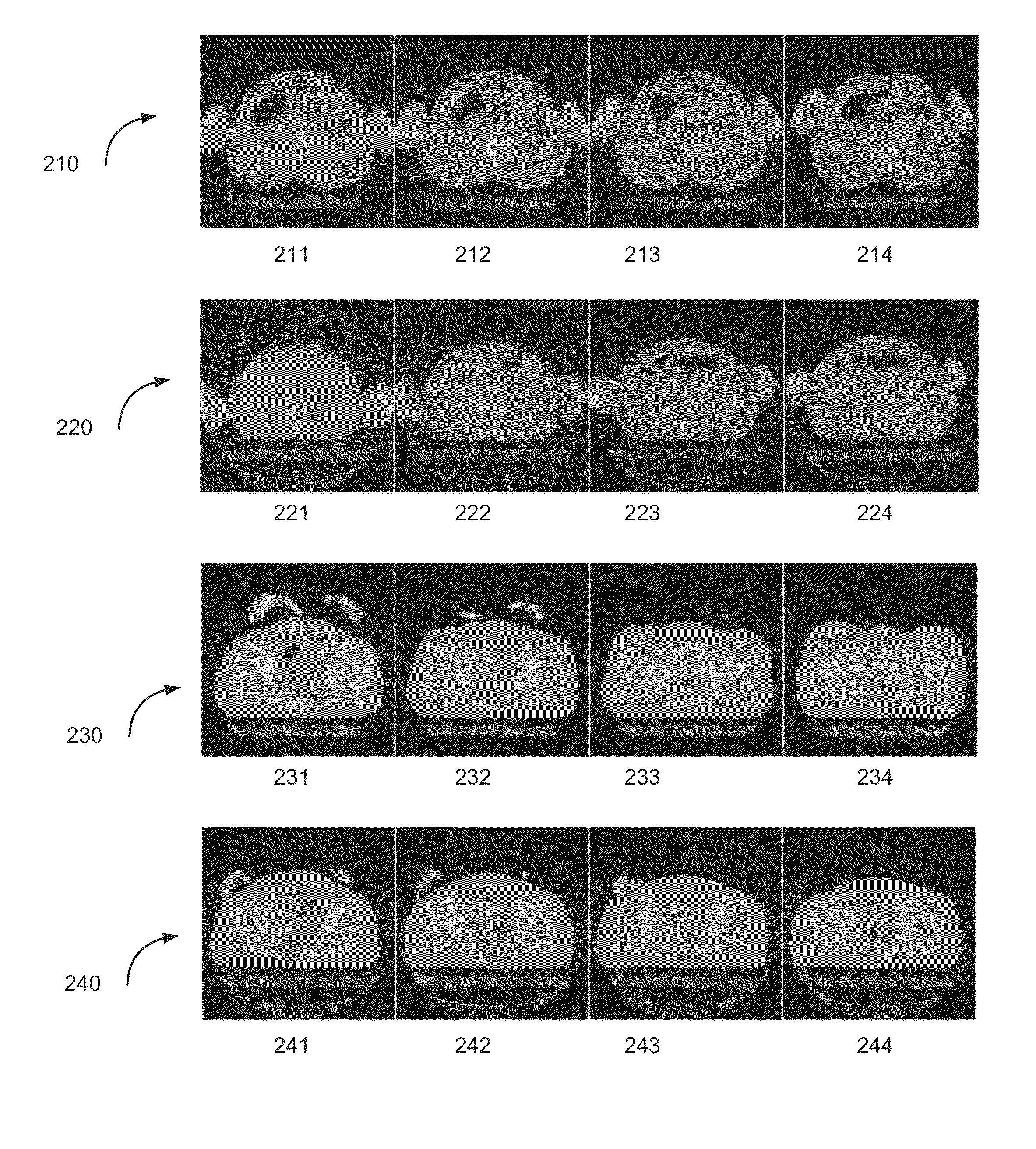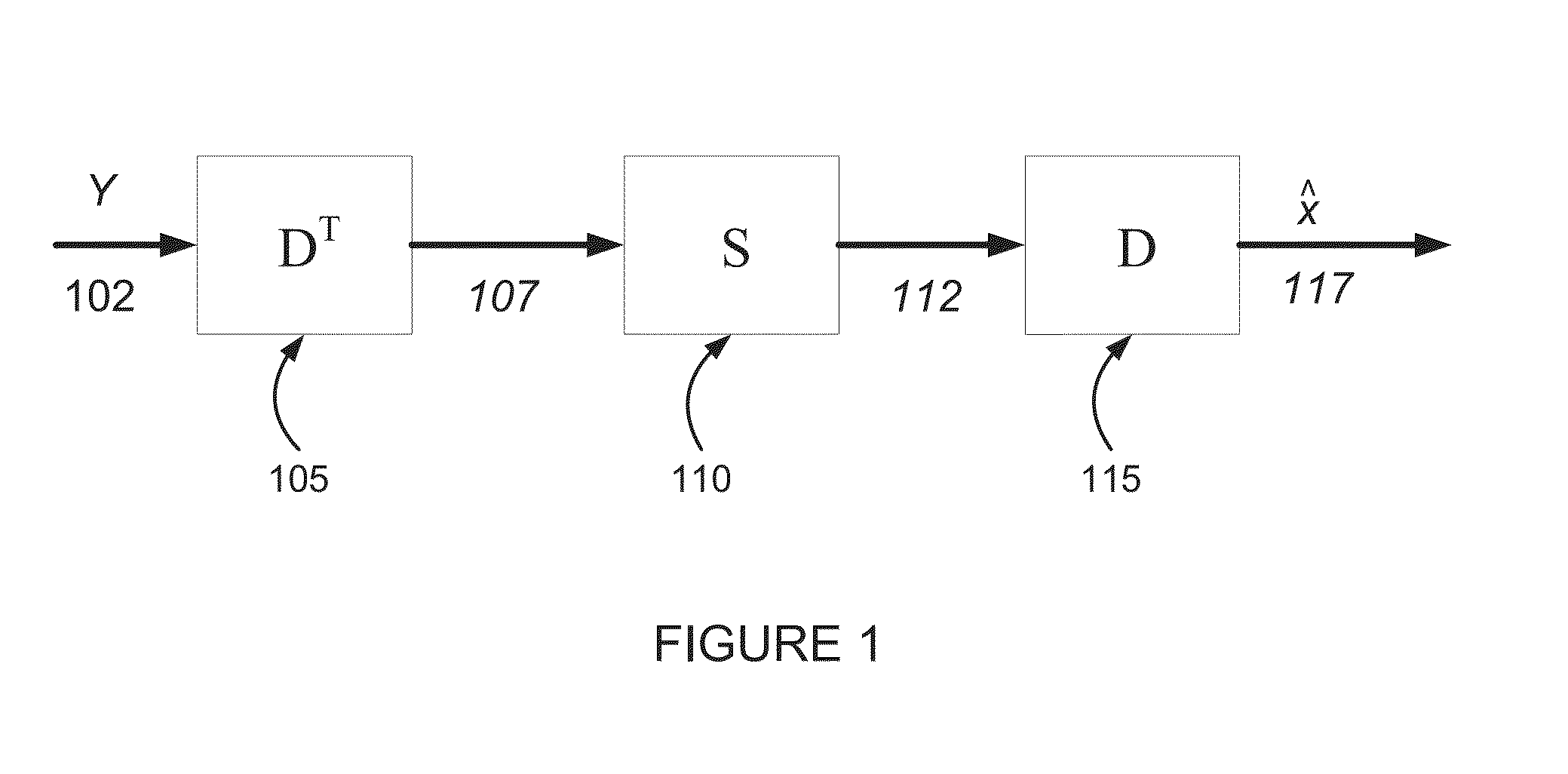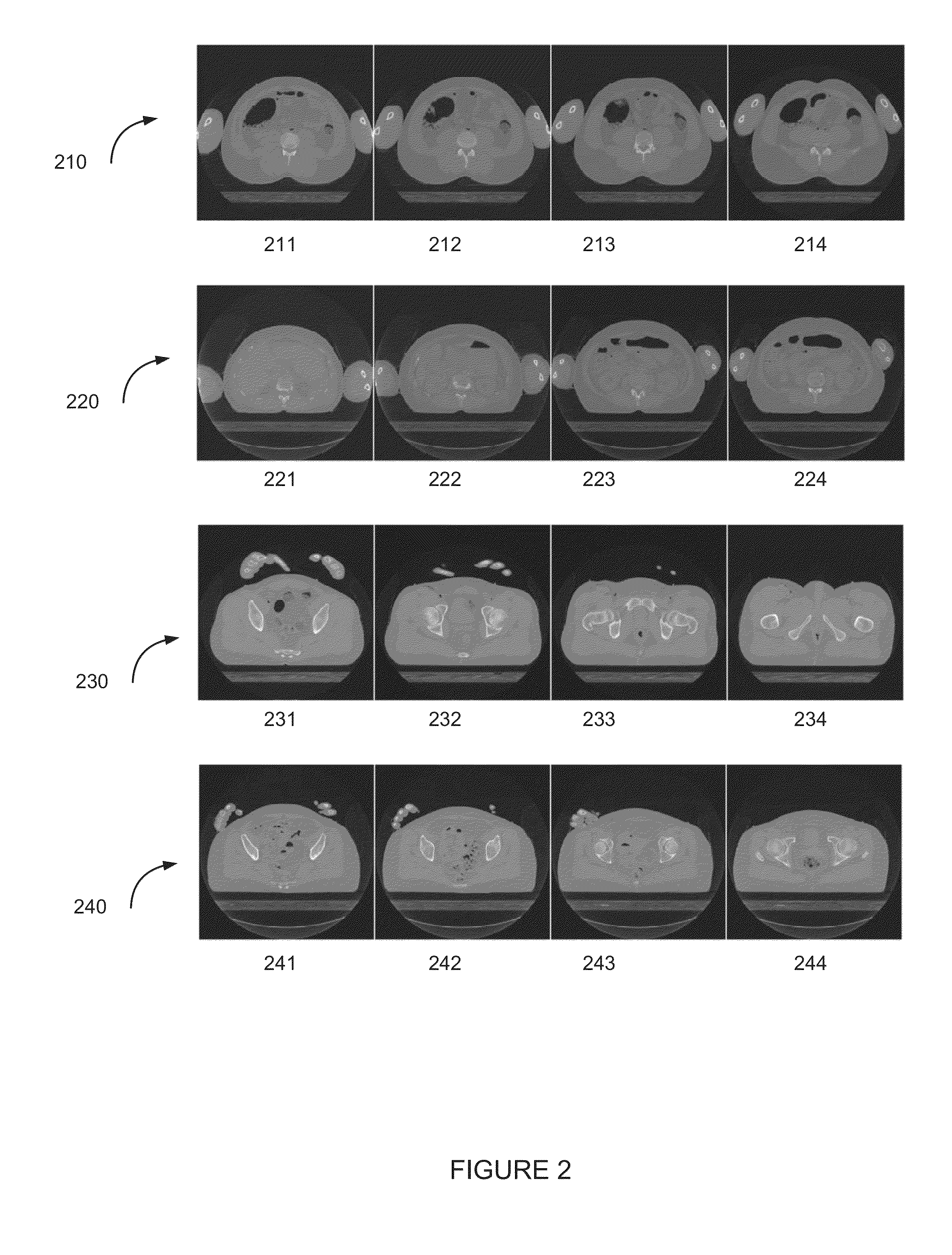Image reconstruction in computed tomography
a computed tomography and image reconstruction technology, applied in image generation, image data processing, instruments, etc., can solve the problems of limited measurement data, limited resolution in ct images, image corruption, etc., and achieve the effect of optimizing image domain shrinkage function and minimizing differences
- Summary
- Abstract
- Description
- Claims
- Application Information
AI Technical Summary
Benefits of technology
Problems solved by technology
Method used
Image
Examples
Embodiment Construction
[0100]The present invention, in some embodiments thereof, relates to computed tomography, and, more particularly, but not exclusively, to methods for reconstruction of images from projected data in computed tomography.
[0101]In reconstructing computed tomography images according to some embodiments of the invention, the raw data, or sinogram, is in what may be called the transform domain. CT Images are produced from the raw data by applying a learned shrinkage function, and transforming into the image domain.
[0102]It is noted that CT images are typically three-dimensional, volumetric images. Example images described herein include two-dimensional images. However, persons skilled in the art will easily recognize when what is described in terms of a two-dimensional image is also applicable to three-dimensional, volumetric, images.
[0103]The term “image” in all its grammatical forms is used throughout the present specification and claims where applicable, to stand for both a two-dimensio...
PUM
 Login to View More
Login to View More Abstract
Description
Claims
Application Information
 Login to View More
Login to View More - R&D
- Intellectual Property
- Life Sciences
- Materials
- Tech Scout
- Unparalleled Data Quality
- Higher Quality Content
- 60% Fewer Hallucinations
Browse by: Latest US Patents, China's latest patents, Technical Efficacy Thesaurus, Application Domain, Technology Topic, Popular Technical Reports.
© 2025 PatSnap. All rights reserved.Legal|Privacy policy|Modern Slavery Act Transparency Statement|Sitemap|About US| Contact US: help@patsnap.com



